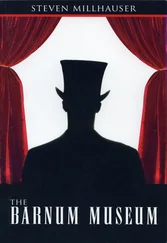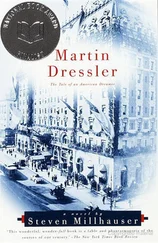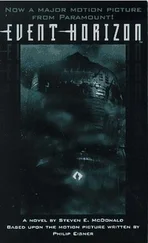And the travelers returned. It was all a little puzzling to those who didn’t travel, and even to the travelers themselves. No one, to be sure, had spoken of remaining permanently in heaven, in the days of the rising Tower. But the vision of a new life in the upper world had always shone out as a promise, especially to families who had climbed higher in successive generations and were waiting for the news that heaven had at last been reached. Now the way was suddenly open, yet there proved to be little inclination for settlement. People rushed in, stayed for a few days, or a few years, and then returned, with the exception of a handful who disappeared and were said to have lost their way in those white, unmapped spaces. Of the many reasons for return, two made a deep impression on those who were waiting anxiously for news from above. First, when all was said and done, when experiences of every kind were taken into account and carefully considered, the upper realm was somehow not what anyone had been led to imagine. The many reports of a brightness, of a blinding radiance, while attractive in their way, tended to suggest an absence of objects, a lack of the visible and tangible, which however wondrous was also somewhat tiring. Even those who claimed to see angels and gates of sapphire and streets of gold, or those who, seeing nothing but brightness, were filled with unspeakable bliss, soon came to feel that heaven, in some indefinable but unmistakable way, was unsuitable for permanent residence by the living.
The second reason took many by surprise. Those who flung themselves headlong into heaven discovered that they still carried with them, however dimly, images of the life their forefathers had left behind, down there on the legendary plain. So in the hearts of even the most fervent pilgrims there existed a counterpressure, a tug downward, toward the half-remembered land, the place of origin.
Thus it came about, after the completion of the Tower, that there was movement in two directions, on the inner ramp that coiled about the heart of the structure: an upward movement of those who longed to reach the top, or to settle on a level that would permit their children or their children’s children to reach the top, and a downward movement of those who, after reaching the top, longed to descend toward the plain below, or who, after climbing partway, felt a sudden yearning for the familiar world.
But these two movements, which together constituted a vertical way of life, were offset by a third movement. Many inhabitants of the Tower who had taken up permanent residence in order to prepare for the ascent of the next generation were too old, or too tired, or too distracted by the life around them, to desire a change in either direction. And so, in addition to the upward and downward migrations, which took place along the inner ramp, there was a horizontal life that flourished in the many chambers that stretched away on both sides of the inner ramp on every level, to the center of the Tower in one direction and to the outer edge in the other. The horizontalists raised children, visited back and forth, and engaged in a communal life much like that of the city far below. Metalworkers, goldsmiths, leather workers, weavers, and reed workers set up workshops and did a thriving business. Communities of tenants established small gardens and sheep pens, to supplement deliveries of grain and fruit from the distant plain. Only sometimes, in the bustle of daily life, would a Tower dweller recall the fabled structure stretching high above, impossibly high, all the way to heaven, and grow quiet for a time.
Although the two ways of life, the vertical and horizontal, proceeded independently within the Tower, they intersected at the arched doorways of chambers directly bordering the inner ramp, where travelers passed up and down. After a while the borderers began to offer inexpensive meals to hungry travelers, who were tempted by the great tureens of soup and the loaves of unleavened bread baking in clay ovens to rest awhile on their upward or downward journeys. For an additional fee, posted on wooden signs, travelers could sleep beneath goat’s-hair blankets in chambers furnished with reed mats, wool rugs, or mattresses filled with straw. Sometimes a traveler, weary of the long journey, and yielding to the seductive peace of the chambers, chose to stay and become a member of the horizontal world; now and then a chamber dweller, stirred by the continual movement of travelers making their way to the top or descending toward the plain, joined the upward or downward flow. But in general the two ways of life opposed each other in equal measure, within the great Tower, as if the two lines of force were part of the system of architectural stresses crucial to the cohesion of the building.
Because of the extreme height of the Tower, which always disappeared from view and therefore was, for the most part, invisible, it was inevitable that rumors should arise concerning its permanence and strength. Cracks appeared in chamber walls, chunks of brightly colored glazed brick on the exterior wall broke off and fell onto the outer ramp, where they occasionally tumbled along and startled travelers, and in the high winds of the upper regions the Tower often swayed, causing ripples of panic among the inhabitants, while those who lived on the plain below, looking up, seemed to see, just beyond the limits of their sight, an entire world about to fall. Then teams of workers would swarm up along the outer ramp to repair the cracks, replace the damaged bricks, and strengthen broad sections of the Tower by propping the inner walls with powerful cedar beams that came from the mountains of Lebanon. On the plain below, an early system of soaring buttresses — a stupendous architectural feat in itself — was reinforced by a massive array of additional supports, which extended high over the streets, over the temples and the royal palace, the river and the marketplace, reaching beyond the fortified walls of the city, out into the distant countryside.
Meanwhile reports of heaven continued to sift down through the Tower, and reports of the plain drifted up, at times mingling and growing confused. People began to dream of climbing to the top of the Tower and entering a world of green fields and flocks of sheep, or descending to a land of blinding radiance. In this swirl of downward nostalgia and upward longing, a curious sect arose, deriding the delusions of climbers and proclaiming that heaven lay below — a wondrous place of twisting streets, marketplace stalls heaped with fruit, and two-story houses with wooden galleries running along inner courtyards. But this was only an extreme instance of the many common confusions of that time. Reports of heaven by actual visitors often seemed unconvincing or deceptive, while people who had never left the Tower began to add colorful touches and even to invent journeys of their own. For the tale-tellers, many of whom came to believe their own stories, heaven was always a sensual delight, a city whose great gates were covered with emeralds and sapphires, beryl and chrysoprase, topaz and jasper, while inside rose towers of silver and gold. The imaginary heaven proved far more compelling than the reported one, which was difficult to visualize and in any case had become half dream by the time it reached the lower regions of the Tower; and if the mixture of elaborations, inventions, distortions, and truths stirred in some a desire to see for themselves, in others it produced a tiredness, a spiritual heaviness, which led them to forgo the exertions of the vertical life and to rest content with the milder, more tangible pleasures of a horizontal existence.
It was about this time that the first rumors arose concerning deeper flaws in the Tower. The cracks, the pieces of fallen brick, even the swaying itself, were said to be common and superficial signs, true of every building, whereas the great Tower, which rose so fearfully high that it attained a different order of being, was subject to stresses and strains unknown to the architecture of the everyday world. There was talk of a hidden flaw, a continuous line or fracture running along the entire length of the Tower, somewhere on the inside; and although no one was able to point to the line itself, it was said that, if you listened closely, you could hear, deep inside the Tower, a faint sound like the creaking of many ships in the harbor beyond the marketplace.
Читать дальше












